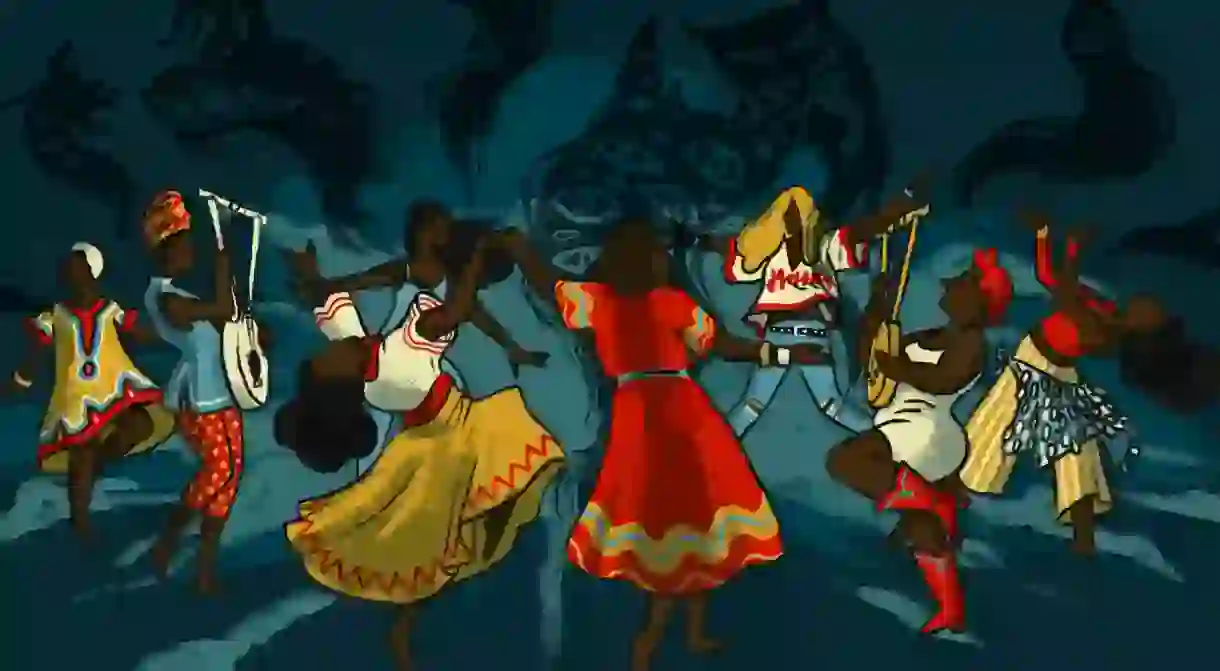Zar – the Exorcism Practice Turned Into an Art Form

In the past, Zar (Zār) rituals were carried out in secret as people believed in the association of the practice with demons and exorcism. It was condemned by some as evil, while others thought it merely nonsense. Today, however, ordinary Egyptians believe Zar music has powers of a different kind. Zar has transformed into an art form appreciated by people from all walks of life.
The history of Zar
Zar is an old practice which is well-known in some African and Sub-Saharan countries. It is thought to have arrived in Egypt in the 19th century from Sudan during the era of Ottoman governor Mohamed Ali, when many Sudanese emigrated to Egypt from 1820 onwards.
As a ritual, it was carried out in order to banish evil spirits and to heal people supposedly possessed by demons. The ceremony included drums and percussion while participants moved in a circle. The leader, traditionally a woman, would sing and dance as the scent of incense filled the air. The possessed person in need of healing would join the group and mimic their movements. Eventually a chicken or rooster was sacrificed and the person who needed healing would faint to the floor.
The percussion instruments used in Zar music are the tanbura (a six-string lyre) and the mangour (a leather belt embroidered with many goat hooves), among others.

Turning rituals into art
Zar is a practice that has long been criticised by conservatives and others who have described it as “quackery”, since it has historically only been practised among those who believed in demons. In modern Egypt very few people still practise it as a ritual and demand for it has also dramatically decreased.
However, two researchers in folk music started separately to revive the art of Zar as they felt the urge to protect the tradition from extinction, presenting the practice as an art form that gathers the last Zar masters from all over Egypt.
Ahmed el-Maghrabi, founder of The Egyptian Center for Culture and Art – Makan, has established the Mazaher band for Zar, while Zakaria Ibrhaim, founder of El-Mastaba Center for Egyptian Folk Music, has established Asyad el-Zar (Zar Masters). Both bands perform regular Zar concerts each month.
El-Maghrabi and Ibrahim haven’t changed a lot from the original rite, though they have removed the slaughtering of an animal practice in order to focus on the music and singing. In most concerts the audience can engage with performers by singing or dancing.
Zar can be roughly divided into three different types: Sudanese Zar, Upper Egyptian (south of Egypt) Zar and El-Ghitani Zar.
Sudanese Zar uses tanbura as a main instrument and is performed by men and women. Upper Egyptian Zar used to be performed by all-women groups, though men now also take part as there are few women still practising. The songs in both Sudanese and Upper Egyptian Zars talk of “asyad” (spirits).
Songs from El-Ghitani Zar, meanwhile, praise Islam’s prophet Mohammed and important Islamic figures. El-Ghitani Zar is usually performed by men.
Where to find Zar concerts?
Zar concerts usually take place in small low-lit halls. Among the best-known groups performing Sudanese and Egyptian Zars are the aforementioned Asyad el-Zar (established in 2010) and Mazaher (established in 2000).
A group called Darawish Abu el-Gheit, which performs El-Ghitani Zar, is at times accompanied by a dancer to created a charged spiritual atmosphere. The group is led by artist Ahmed el-Shankahawy.
Asyad el-Zar and Darawish Abu el-Gheit perform at El-Dammah Theatre affiliated to the El-Mastaba Center for Egyptian Folk Music in downtown Cairo, while Mazaher performs every Wednesday at The Egyptian Center for Culture and Art – Makan in the Munira area in downtown Cairo.













